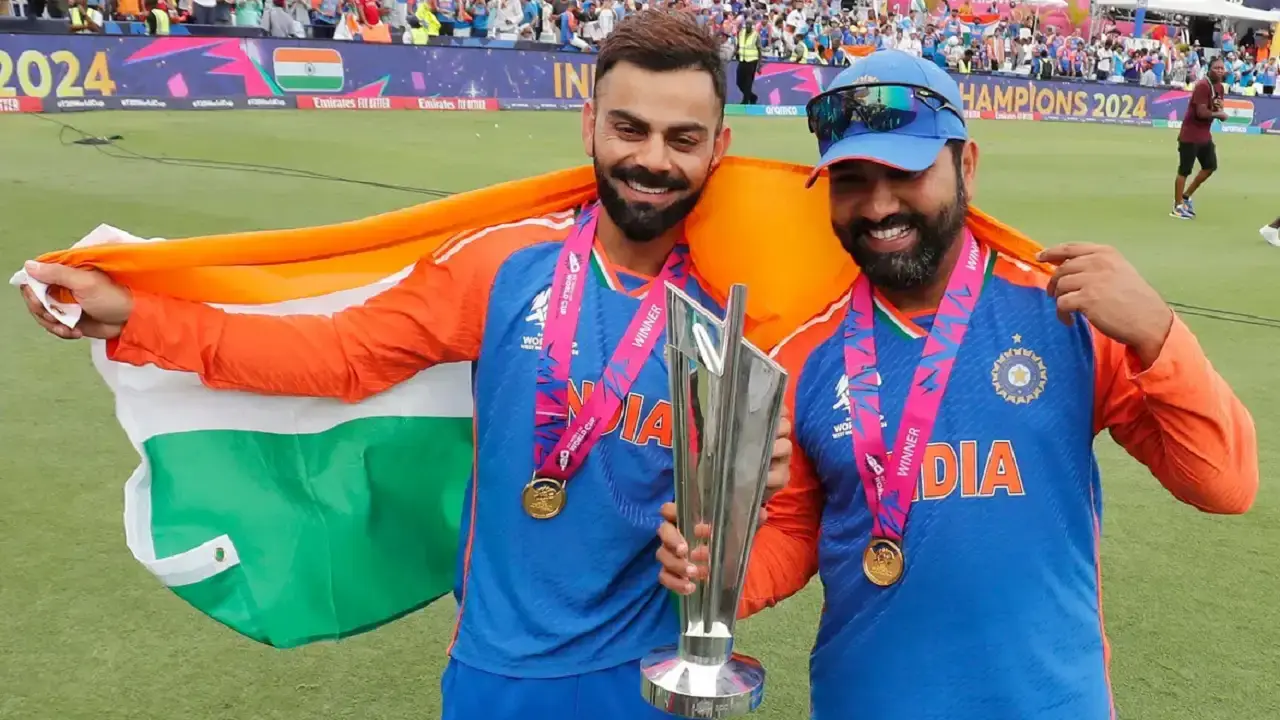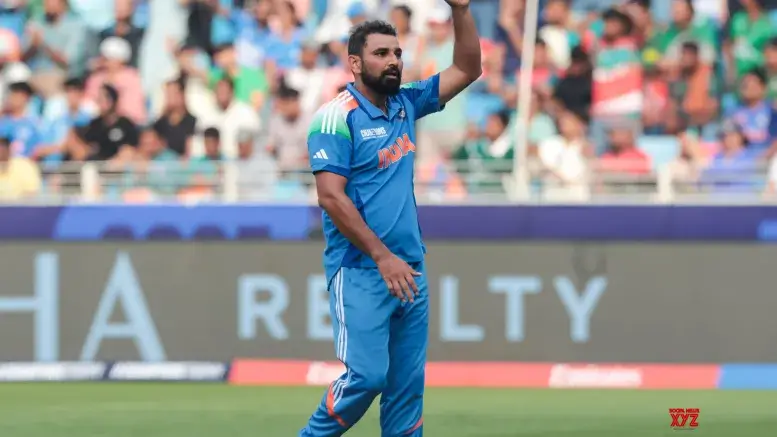Ajit Agarkar’s NDTV Summit comments set off a heated but necessary debate. He insisted Rohit Sharma and Virat Kohli are not on trial. He argued selection requires steady data, not fan-driven panic and noise. His tone stressed fairness, patience, and respect for long careers.
The discussion arrived as India prepared for an ODI series in Australia. Both stars appear as ODI-only players with limited match practice. Agarkar urged measured assessment across multiple series, not knee-jerk decisions. He framed 2027 as a distant plan, not an immediate exclusion test.
Mohammed Shami’s fitness row added complexity to the selection narrative. Shami said Ranji games proved his readiness to play international cricket. Selectors countered that continuous medical proof matters more than one domestic match. Agarkar emphasised transparent processes and maintained open player communication.
This article focuses strictly on players and selection logic, avoiding speculation. It evaluates Rohit, Kohli, and Shami against Agarkar’s balanced statements. It considers training signals from Perth and selection needs towards 2027. It aims to guide readers with simple, clear analysis and actionable takeaways.
Rohit and Kohli: Not on Trial, Still Central
Agarkar’s main point was that legends deserve measured assessment over time. He warned against judging careers by one poor series or patch. He cited their long-term averages and game-changing contributions for India. He argued that selection should weigh fitness, role clarity, and team balance.
Both players retired from Tests and T20Is to focus on ODI commitments now. That move created space for youth, while keeping senior experience available when needed. Agarkar suggested their ODI futures depend on consistent evidence, not social media rows. That approach aims to protect team stability during a generational transition.
Selectors must balance form, workload, and tactical needs across tours and tournaments. Rohit and Kohli offer mentorship and finishing skills often unseen in statistics. Young players gain temper and technique from sharing dressing rooms with them. Agarkar’s stance reduces panic and supports strategic squad planning for the years ahead.
This is not about preserving sentiment or resisting change for its own sake. It is about managing risk, continuity, and tournament readiness sensibly. If selectors apply consistent metrics, decisions will feel fair and defensible to public scrutiny. Agarkar’s calm tone signals a process-driven approach over headlines or instant outrage.
Experience vs Form: The Selector’s Tightrope
Form will swing, but class tends to last longer than temporary dips. Selectors juggle numbers, medical reports, and dressing-room chemistry when choosing squads. Agarkar believes steady evidence trumps dramatic conclusions after a few matches. That balance keeps India competitive while nurturing the next generation of stars.
Training Lights at Optus Stadium: What Nets Revealed
Perth nets showed very useful signals about match readiness and intent from players. Virat Kohli looked sharp during catching drills and intense net sessions. Rohit Sharma began rusty but found his timing once he spent extra time in the nets. These sessions indicated readiness but also highlighted the need for match minutes.
Kohli’s fluency in the nets suggested good touch and alignment with batting mechanics. Rohit’s slower start underlined his need for rhythm after time away from international cricket. Both players engaged fans kindly, signing autographs and boosting stadium anticipation heavily. Their presence clearly raised ticket demand and boosted team morale before the first ODI.
Net sessions also gave insights into pace bowlers and support staff planning ahead. Young quicks like Harshit Rana and Arshdeep Singh provided zip that challenge top batters in the nets. Team management used nets to test the wheels of the combination against likely Australian conditions. These practices form small but vital data points in selection thinking.
Agarkar and coaches will weigh net intensity, workload responses, and injury markers carefully. Training output matters, but match performance remains the definitive selection yardstick. Net signals reduce uncertainty, but selectors still need sustained series data before finalising long-term roles. This cautious approach aligns with Agarkar’s broader selection philosophy.
Rohit Sharma: Role, Rhythm, and Workload Management
Rohit’s post-captaincy role remains influential inside and beyond the playing XI. He provides calm judgement in the top order and guidance during tense chases. Agarkar hinted at workload management to preserve Rohit’s big-match impact effectively. This planning helps extend his international life without burning him out.
Rohit’s greatest value often shows in partnerships and pacing innings under pressure consistently. He helps groom openers and middle-order batters through on-field leadership and nuanced shot selection. Rotating him in less critical series can keep him fresh for tournaments and deadline fixtures. That rotation strategy balances immediate results with long-term availability.
Historically, senior players eased transitions by mentoring successors while playing selectively when necessary. For a historic perspective and team evolution, see the India vs Bangladesh timeline, which shows how senior exits shaped new entries smoothly. The internal link gives context to how India successfully rebuilt before. Use that timeline to compare transition patterns and veteran usage in earlier cycles.
Agarkar’s confidence in Rohit’s process signals trust in evidence-based selection and workload planning. If Rohit’s match rhythm returns, selectors can slot him into crucial slots strategically. His batting remains a match-winning asset when prepared and rotated thoughtfully. That calculated usage aligns with Agarkar’s long-term blueprint for India’s ODI setup.
Virat Kohli: Rhythm, Intensity, and Cultural Value
Virat Kohli’s preparation standards set benchmarks across the squad in crucial ways. His intensity in nets signals readiness even after limited match exposure lately. Agarkar sees Kohli as both a run-scorer and a cultural anchor for team discipline. That dual value makes him hard to replace with raw talent alone.
Kohli retired from Tests to free space for long-term WTC plans and prioritise ODI longevity. He continues to demonstrate high professionalism in training, diet, and mental preparation every day. Selectors must judge his sustained sharpness across series rather than one-off performances. Keeping him engaged provides daily standards for younger players to match.
Kohli lifts the team’s hunger and chase temperament, currently lacking in many setups worldwide. Agarkar’s backing shows selectors value that intangible engine as much as enamelled statistics. If Kohli maintains fitness and match intensity, his inclusion through 2027 remains realistic. He functions as a bridge linking past success with future promise.
In short, Kohli’s presence stabilises dressing-room culture while still producing match-winning skills on the field. Agarkar’s stance protects that stability, ensuring India retains an experienced point of reference. This cultural value supports both talent development and trophy-hunting ambitions simultaneously.
Kohli’s Mentorship: Quiet Leadership, Loud Results
Kohli’s mentorship helps younger batters handle pressure situations with calm technique. His insistence on process fosters professionalism in training and match planning. Young players learn about match pacing, intent, and fitness from his daily routines. This influence accelerates their growth and reduces rookie mistakes under pressure.
Mohammed Shami: Fitness Proof, Fairness, and Reintegration
Mohammed Shami’s Ranji appearances ignited a public debate about readiness for international duty. Shami claimed first-class cricket proved his ability to bowl long spells and stay fit. Selectors maintained that sustained fitness data and medical validation remain essential before international recall. Agarkar stressed open dialogue and evidence-based decisions to manage this issue.
Modern selection protocols favour the continuous monitoring of workload, recovery, and bowling biomechanics reliably. One domestic match often cannot prove long-term fitness for international intensity. Selectors aim to prevent re-injury by requiring multiple sustained performances and medical clearances. That process safeguards players’ careers and the team’s tactical availability.
Shami’s quality remains unquestioned when fully fit and firing in long spells consistently. If he sustains form across Ranji matches and shows no recurrence of issues, selectors will consider his return strongly. Agarkar left the door open, promising to monitor performance and medical updates closely. This stance balances fairness to players with team-duty prudence.
Transparent fitness protocols and consistent communication reduce public confusion and internal friction considerably. Shami’s case can become a blueprint for reintegrating senior pacers responsibly in future selection cycles. Agarkar’s calm handling of this matter emphasises professionalism rather than knee-jerk choices.
Selectors’ Roadmap: Building Toward 2027 with Balance
Agarkar emphasised planning, not panic, as India shapes its ODI future over two years. He wants to combine youth energy with veteran guidance in a sustainable squad model. Rotation, clear fitness metrics, and targeted series exposure form the backbone of his approach. This repeatable process increases the chances of peaking at major tournaments effectively.
Select a pool based on roles, not reputations, and track players across formats and conditions. Use domestic indicators, net intensity, medical reports, and controlled match minutes to grade readiness. Communicate timelines and criteria to players to reduce speculation and improve trust. These practical steps will refine selections and reduce headline-driven controversies repeatedly.
Agarkar’s message invites patience, data-led judgement, and empathy in selector-player relations constantly. It shifts public debate from reactive criticism to constructive evaluation about team-building. If selectors execute transparently and consistently, India can retain top-level competitiveness through 2027. That measured roadmap could become a model for other boards practicing gentle transitions.
Ultimately, success demands results and credible processes to back selection calls publicly and privately. Agarkar’s steady hand aims to balance these requirements and protect team integrity. The coming series and Ranji season will provide the evidence selectors need to finalize longer-term roles.
Conclusion
Ajit Agarkar’s NDTV comments favoured calm, transparent, and evidence-based selection over noisy trial narratives. He defended Rohit Sharma and Virat Kohli as assets, not short-term experiments. His response to Shami showed selectors value medical proof and sustained performance. The underlying theme stresses patience, fairness, and process-driven decisions for India’s ODI future.
Training signs from Perth indicate both Rohit and Kohli retain match intent and intent-related fitness markers. Selectors will watch domestic seasons and upcoming ODIs to confirm readiness and workload tolerance. If veterans show consistent form and fitness, India gains both runs and mentorship simultaneously. Agarkar’s policy supports a balanced blend of youth, experience, and transparent metrics.
This approach risks slower turnover, but it decreases abrupt gaps during crucial tournaments. For a nation aiming at sustained success, smoothing transitions matters more than dramatic cuts. Agarkar’s method offers that smoothing through clear criteria and steady communication. Time, consistent evidence, and measured selection will decide whether his strategy proves right.











